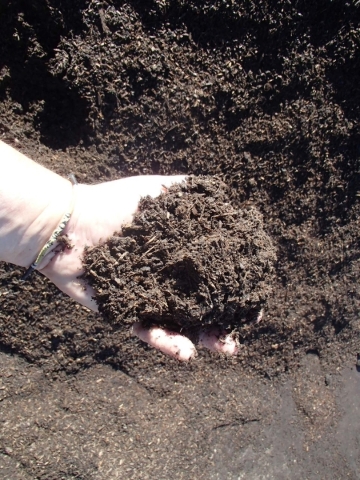Clean tools when pruning Canary Island date palms in Las Vegas


Q: I had a mature Canary Island palm in my back yard for about 10 years. This summer it became infected and died. I have a monthly service with a landscaping company, and their best efforts to keep it alive were to no avail. Do you suggest I plant another one or buy a different type of palm? It was in the center of our yard and served as a focal point to our landscaping.
A: Finding why the palm became sick will determine if you can replant in the same hole. In California, this palm is susceptible to a disease called Fusarium that can contaminate the soil in the planting hole and prevent you from planting a new one in that spot. To my knowledge, this disease has not been reported on this palm in Southern Nevada, but your description fits.
Older or lower leaves sometimes die before the newest leaves in the center begin to turn brown and die. In some cases, leaves or fronds in the center of the canopy may die while the lower leaves appear healthy. And in even other cases, leaves on one side of the palm may brown while the other side remains green.
Often, leaf fronds turn yellow before dying, so it’s possible to confuse it with the chlorosis, such as iron chlorosis, or other micronutrients, such as manganese. The yellowing leaves may be confused with over watering symptoms. Infected palms frequently die in a couple of months or in some more rare cases die a slow death over several seasons.
This disease can be spread on pruning tools such as chainsaws, so it is important that these tools be cleaned properly between trees and between cuts if the tree is suspected of having this disease.
Another point of entry for this disease is through the roots. If soils around this palm tree are kept excessively wet by watering daily or the soil does not drain very well, this could increase the chances of this disease.
This disease can sit in the soil and remain active for 20 years or more so I would not recommend planting another Canary Island date palm in that same hole. You would select plants that are more tolerant to this disease when planting in this area.
You should also amend the soil for better drainage and make sure the planting hole drains properly before putting another plant in the same or near the same hole.
Q: I’m sending two pictures of some scaly growth, like woody galls, on the tips of my oleander branches. There is also galling taking place on the branches and leaves. My oleanders are the only ones infected. How do I correct this problem? Will it kill the plants?
A: These woody galls on branches and leaves are called oleander gall in Arizona, oleander knot in California and bacterial gall in Texas. These are woody galls that appear occasionally on oleander due to an infection by a bacterium. It is nothing to get overly concerned about and will not kill the plant.
This particular disease is spread from plant to plant on pruning tools. It can also be spread during wet, windy weather just after pruning. Avoid irrigating oleander with overhead sprinklers. Drip irrigation or bubblers would be a better choice.
Even though it’s a bacterial disease, you can use chemicals such as copper fungicides to help reduce the infection, but they are not necessary. Most of this can be handled with proper pruning.
Make sure all pruning equipment is sanitized. In this particular case, you should clean pruning tools between cuts and between plants to keep from spreading this disease on pruning tools.
I would use a 10 percent bleach solution applied to pruning blades or pruning saw with a spray bottle. Make sure you oil all pruning tools and blades when finished or the bleach will rust them.
Plants that have a few of these galls present can be pruned and the galls removed. Prune 6 to 10 inches below the galls and sanitize your pruning equipment before each new cut.
If a plant is severely infested with oleander gall, I would cut it to the ground this winter and let it regrow from the base.
Fertilize the plants with a high nitrogen and high phosphorus fertilizer in January and give them a large volume of water each time you irrigate.
Q: You recommended that to grow a persimmon tree in our area, the soil needs to be amended. What is amended soil? Do you a technique you recommend to amend the Las Vegas soil?
A: Soil is amended by mixing it with something that improves the existing soil in some way. There are a number of amendments available, but I prefer compost for most garden soils and fruit trees.
Compost improves the desert soil chemistry, soil structure and its biological activity. Compost opens the soil improving drainage and aeration as well. Our desert soils have very tiny pore spaces between soil minerals. Larger pore spaces are important for roots to stay healthy. Roots need about an equal mixture of water and air between soil particles.
Compost improves soil chemistry by reducing the alkalinity of desert soils and helps chemicals required by the plant to become more available to them.
I recommend that existing desert soil be removed from a future planting hole and this soil mixed about half and half with compost. Once the large rocks are removed, this amended soil is used to fill the spaces around plant roots when planting.
Organic soil amendments, such as compost, disappear in the soil over time so they must be replenished. Replenish soil amendments by adding a 1-inch layer of compost to the top of the soil every year. Compost slowly “dissolves” back into the soil, keeping the soil amended.
Q: I read about air pruning the roots of potted plants using either fabric pots or drilling holes in pots and lining with landscape fabric. Supposedly, air pruning keeps the roots in “check” so that they do not outgrow the pot. The idea sounds logical, but with our extreme heat and hot winds, could this work in Las Vegas?
A: Air pruning is allowing the roots of plants to be exposed to the air and die. It is normally used in greenhouse production with potted plants. It can be used for plants growing in containers as well. It is popular where other types of root pruning may not be practical.
If plants grown in containers are allowed to rest on soil or gravel, the roots of these plants can grow out of the holes on the bottom or sides of the container and into the wet soil beneath it. Once the roots leave the container and grow into the soil, the tops of these plants typically have big growth spurts.
In the past, if these pots or containers were given a quarter turn twist, this would sever young roots and prevent them from getting anchored in the soil beneath them. This is an older method of root pruning.
Another older form of root pruning was using chemicals such as copper sulfate applied to the surface of the soil or gravel just under the pots or containers. The concentration of copper would kill the roots of plants growing into it but would hurt the tops of the plant.
Air pruning is another form of root pruning where the bottoms of containers are pots suspended in open air. Roots exposed to the open -air will die without moisture. As roots leave the container through drainage holes, the roots die and become “root pruned” by the air.
This would work in our climate as well. However, in our hot desert climate I worry a bit about pots or containers left in full sunlight. The soils in these containers can heat up quickly and the roots “roasted” on the side of the container facing the sun.
If pots or containers that you are using for root pruning are in full sun, make sure they are white or shiny and reflect as much sun as possible. It would be best if they were shaded. Water the plants in the containers just before the heat of the day.
— Bob Morris is a horticulture expert living in Las Vegas and professor emeritus for the University of Nevada. Visit his blog at xtremehorticulture.blogspot.com. Send questions to Extremehort@aol.com.


















